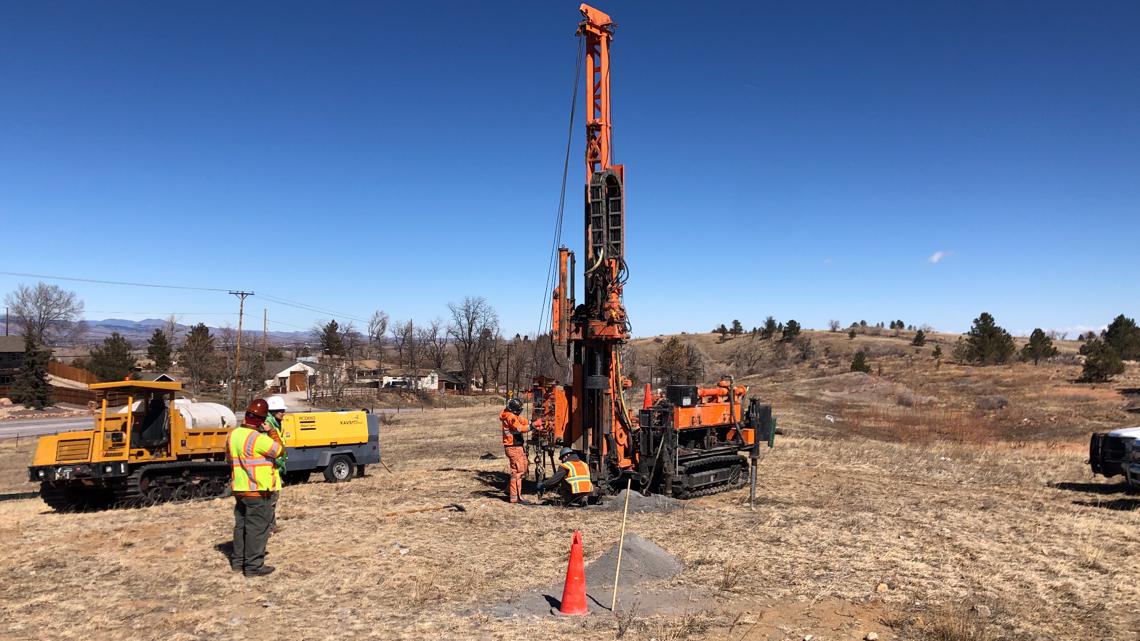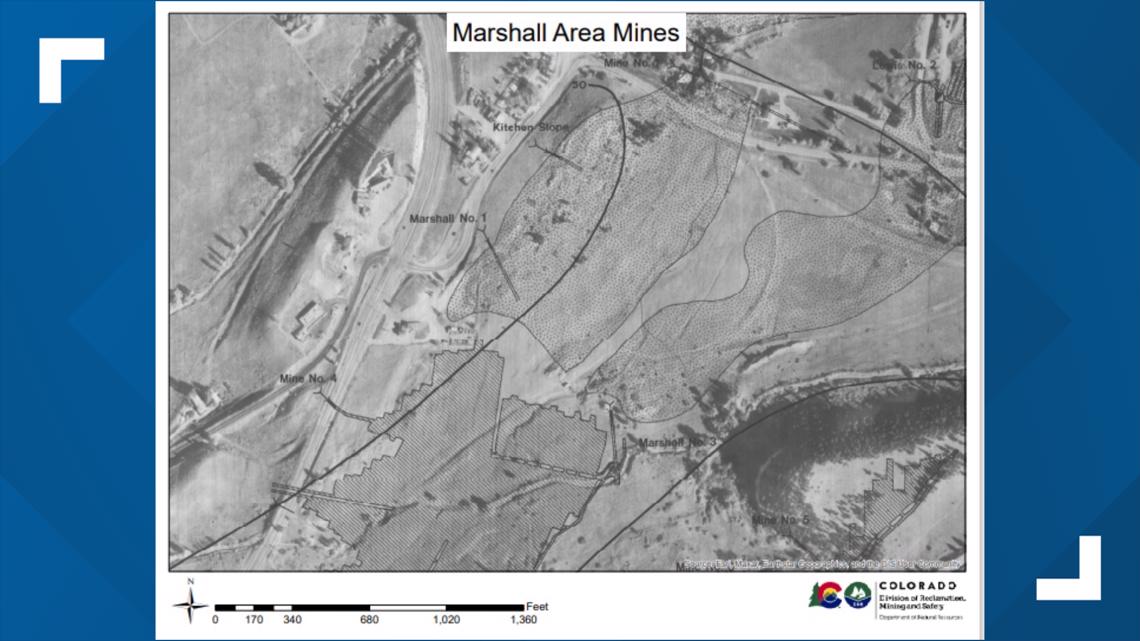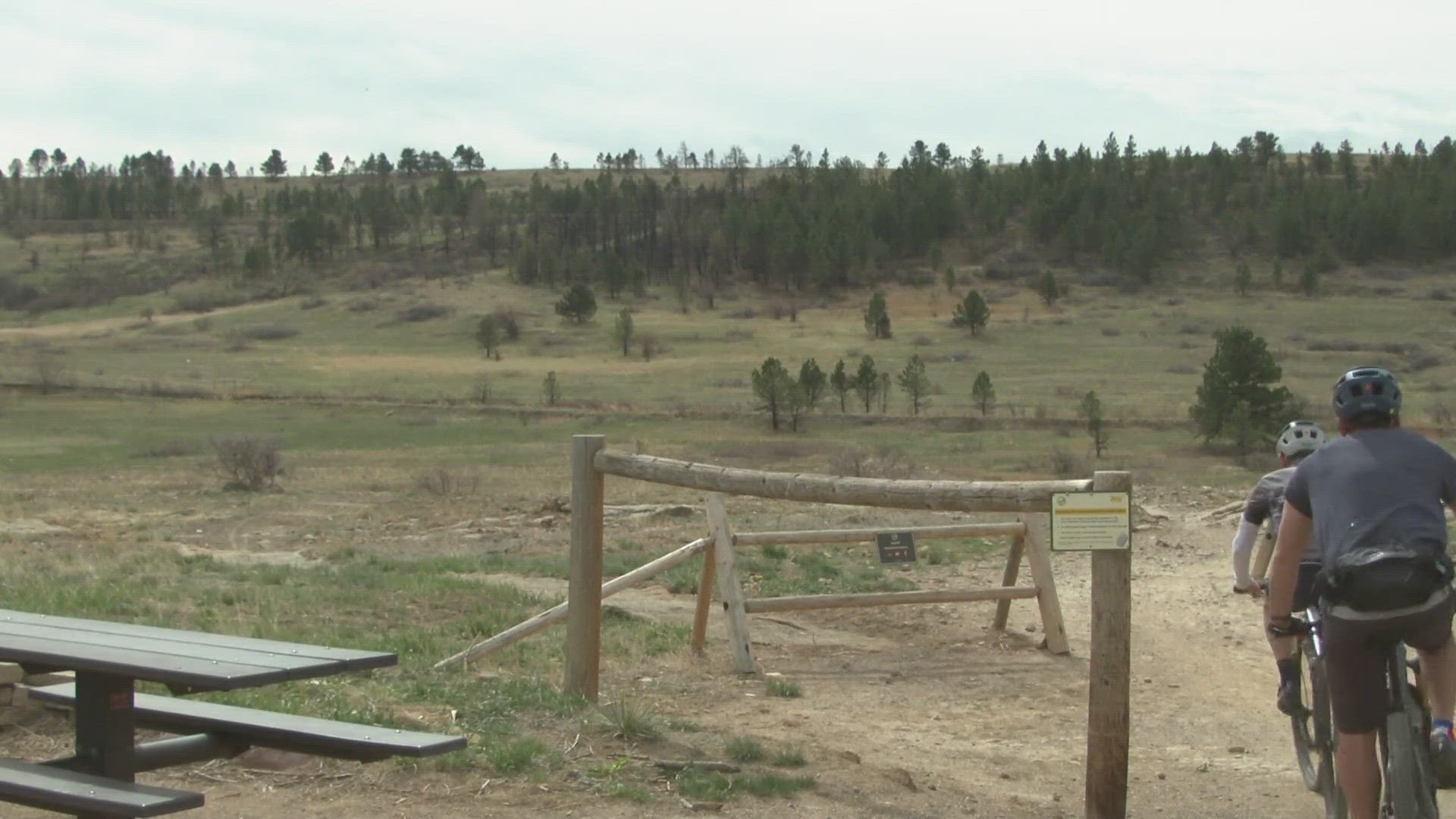BOULDER COUNTY, Colo. — For more than 100 years, a coal fire has burned underground in Boulder County, and officials are looking into it as a potential cause of the Marshall Fire.
Now the state's Division of Reclamation, Mining, and Safety is investigating the area and has plans to put the fire out in some of the spots where it has the potential to start a fire above ground.
Jeff Graves, program director for the Inactive Mine Reclamation Program, said recent federal funding from the infrastructure bill is allowing his team to be proactive, specifically when it comes to the fire burning under the Marshall Mesa.


"There’s been off and on underground combustion at this site," Graves said.
The place where people now hike and bike used to be a giant mine in the late 1800s.
"They were hauling millions of tons of coal out of this valley," said Graves, looking at historic photos of the mine at the Marshall Mesa trailhead kiosk.
The mines made the area a lot of money but also created a safety hazard, as Graves points out the smoke coming out of the ground in a photo from more than 100 years ago.
That fire still smolders today.
"The concern is obviously if you have combustible material that gets exposed to the surface, you can have an ignition of grasses or other vegetation, and then you can have a wildfire that ignites as a result of that coal or that hot material being exposed at the surface," Graves said.


Through monitoring, Graves said they've found temperatures to be around 200 degrees in the coal fire areas.
He said in his world, that's "smoldering." There are fires in the state that are burning at more than 900 degrees.
Despite the Marshall Mesa fire seeming to be middle to low priority, Graves' team is focused on it because of its proximity to people, homes and businesses.
Although investigators have not determined the cause of the Marshall Fire, that's one reason why Graves said this work is important.
"I think that certainly highlights our need to monitor these sites, and when we identify areas that are high risk, we take a proactive approach and address them as quickly as we can," he said.
The next step in this process will be to identify areas that have the potential to start a fire above ground and mitigate them.
"The goal would likely be to excavate the areas that we identify as high risk priority, and then we quench those or cool them with water and then mix it with non coal or non combustible material and put that back in the ground," Graves said.
He added his team has done that successfully in a few other parts of Colorado, including a site outside of Craig, and another near the border of Utah.
SUGGESTED VIDEOS: Latest from 9NEWS

